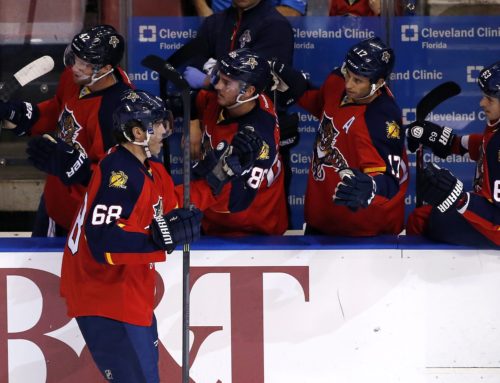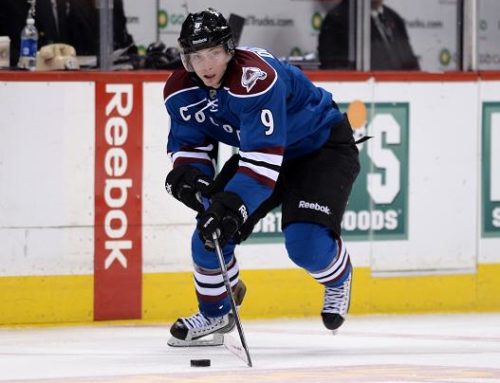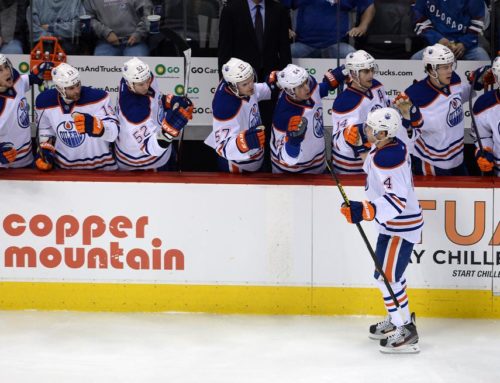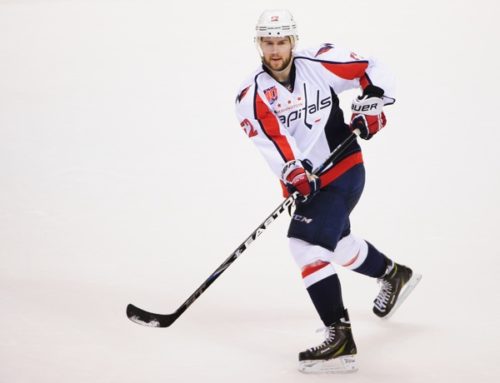
Rob introduces Quality Starts and the league’s most consistent goaltenders.
Quality Starts
At last, your fantasy hockey leagues have an alternative to goalie wins and losses: quality starts. No longer can your netminder earn fantasy points merely for playing on a good team with lots of goal support, because quality starts can only be earned when he plays well enough for an average team to win.
Quality starts have actually been around since 2009, but were only available at the end of the season in year-end publications like Hockey Prospectus. Now, at least, they’re available on a real-time basis courtesy of Hockey Reference.
"We’ve added four new measures to goalies on Hockey-Reference.com, Games Started, Quality Starts, Quality Start Percentage, Really Bad Starts. These should be available anywhere you see goalie stats on the site currently, including the Play Indexes." – Hans Van Slooten
Yes, that also means that the new goaltending data goes all the back to 2007-08 season, when Martin Brodeur recorded the unmatched feat of 50 quality starts.
Leader Board
According to the latest data on Hockey Reference, this year’s leader is Pekka Rinne, by some margin. He’s already got 20 quality starts, well ahead of second-place Braden Holtby, who has 15 in 22 starts. Here’s a look at the top 10, just prior to the start of last night’s games.
Goalie Team GS QS QS%
Pekka Rinne NSH 23 20 87.0%
Corey Crawford CHI 18 14 77.8%
Jaroslav Halak NYI 19 13 68.4%
Braden Holtby WSH 22 15 68.2%
Jonathan Quick LA 21 14 66.7%
Ben Bishop TB 22 14 63.6%
Jonathan Bernier TOR 19 12 63.2%
Ondrej Pavelec WPG 21 13 61.9%
Marc-Andre Fleury PIT 18 11 61.1%
Frederik Andersen ANA 23 14 60.9%
Minimum 15 starts
Quality starts adds a brand new dimension to fantasy hockey, adding a key category to the goaltending pool that isn’t subject to factors outside their control, like how good the team is offensive or defensively, nor how much goal support they receive.
Some History
As I wrote in last year’s Hockey Abstract, forget evaluating goalies based on wins and losses. That’s over! If the starting goalie stops at least a league average number of shots in a particular game, assuming he was sufficiently tested, then that’s all that can be fairly expected of him.
58
10
7
.9157
57.4
Buf/StL
157
90
18
11
.9171
57.3
Phx
161
92
21
15
.9203
57.1
Wsh
86
49
13
8
.9183
57.0
Chi/Phi
67
38
8
5
.9075
56.7
Ott
134
75
19
12
.9172
56.0
Cgy
92
51
15
6
.9115
55.4
Fla
65
36
11
9
.9114
55.4
Wsh/Buf
55
30
8
3
.9105
54.5
Pit
159
86
23
8
.9152
54.1
Phi/Edm/Min
127
68
28
11
.9073
53.5
Col
62
33
8
3
.9137
53.2
Fla
50
26
12
4
.9027
52.0
NJ
127
65
25
6
.9041
51.2
NYI/Wpg
53
27
11
2
.9051
50.9
Min
105
53
19
11
.9104
50.5
Car
112
56
19
9
.9106
50.0
NYI
121
60
21
8
.9091
49.6
CBJ/Phi
122
60
25
16
.9075
49.2
Wpg
167
82
32
14
.9042
49.1
Edm/Nsh
110
54
19
8
.9105
49.1
Edm/Chi
55
27
10
8
.9082
49.1
Wsh/Pit
62
30
13
9
.9154
48.4
Tor/Det
66
30
9
4
.9077
45.5
Tor
97
43
19
15
.9116
44.3
TB
60
26
11
11
.9001
43.3
Minimum 50 Starts
What should we be looking for? Obviously, a quality start percentage (QS%) below 50% is quite poor, anything over 60% will be among the league leaders, and the average for an NHL regular is 53.4%. Based on the average of every goalie with fewer than 10 starts in a season, the average for replacement-level goalies is 42.8%, but there is some selection bias involved in that criteria, since playing that poorly will generally limit you to 10 starts in the first place.
One final element available for hockey pools is the really bad start (RBS), which is sometimes known as blow-ups or disaster starts, which are awarded when a goalie fails to stop even 85% of the shots. A team has only a 10% chance of winning when their starting goalie fares that poorly. I’ve supplemented each goalie’s RBS with how frequently he’s pulled (for any reason), which is shown side-by-side in order to provide an idea which goalies coaches have had more patience with (relative to the team’s other options). (Ed Note: This section was taken from Hockey Abstract, and updated slightly).
Relationship with Save Percentage
I was recently asked by Neil Greenberg of the Washington Post if adding quality starts would just mean doubling down on save percentage. Based on the leader board, no — save percentages vary widely. Holtby’s save percentage, for instance, is .914, the same as Jonas Hiller and Robin Lehner, who have a combined 11 quality starts in 24 games.
How does that work? Well, two goalies could have a .933 save percentage on the week, with one posting that save percentage consistently, but the other enjoying a shutout while going .900 his two other games. Which goalie would an NHL team rather have? Their save percentages are identical, but one goalie will have three quality starts to the second goalie’s one.
Closing Thoughts
It’s always a thrill whenever one of my creations hits the mainstream, so I want to thank Hans Van Slooten for all his hard work getting this metric added to Hockey Reference.
Now, at last, fantasy hockey pools can get rid of wins and losses forever, replacing it with quality starts. This statistic is independent of a team’s offensive and defensive abilities, and can be achieved regardless of how much goal support he received, and can be maintained even if and when he is traded to another team. Hopefully it serves as a very welcome addition to your league.





 SEA
SEA CHI
CHI FLA
FLA DAL
DAL WPG
WPG CBJ
CBJ L.A
L.A MIN
MIN DET
DET VAN
VAN
